Motion detection has become a pivotal component in various fields such as IoT lighting control, home automation, office automation, apartment security, and more IoT applications, because of the global wave of intelligence and and growing emphasis on sustainable practices.
Therefore, the Passive Infrared (PIR) motion sensor has become one of the most widely used sensors for its ability to detect human motion in all walks of life. Whether it’s the automatic lighting in hallways or the intrusion alarm in houses and villas, the PIR sensor has become a ubiquitous presence. Countless individuals have experienced its functionality firsthand.
What Does PIR Sensor Mean?
The term “PIR sensor” stands for Passive Infrared Sensor, which is a type of sensor that functions by detecting infrared radiation. As the name suggests, PIR sensors are passive in nature, meaning they do not emit any form of energy themselves. Instead, they are designed to detect the infrared radiation emitted by moving things within their field of view, including objects, animals, and humans. This is what makes it different from active infrared sensors. Some also use Pyroelectric InfraRed Sensor to illustrate the abbreviation, I will explain why in the following paragraphs.
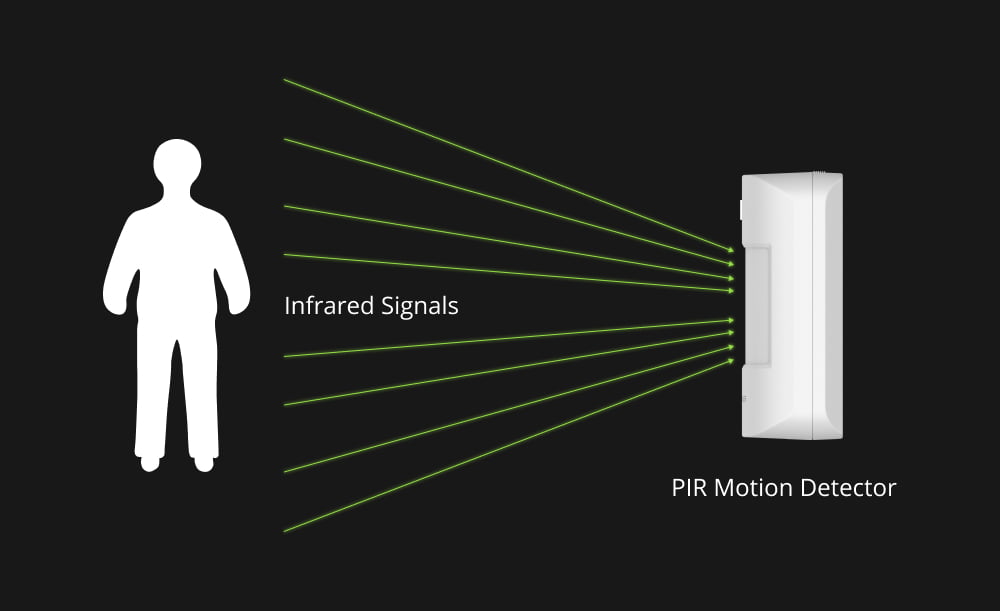
What Does A Passive Infrared Sensor Detect?
A passive infrared sensor (PIR sensor) is mainly used for detecting the presence of the human body, particularly in the security alarm industry. It is capable of detecting infrared-emitting objects, like humans, animals, vehicles, etc.
When an object enters the sensing range of the PIR sensor, it senses changes in the infrared radiation emitted by the object, and identifies whether there is an entry of a human body or animal.
It should be noted that a PIR sensor does not directly detect the shape, size or color of an object. Rather, it bases all of its calculations only on variations in infrared radiation. Therefore, proper placement and adjustment of the PIR sensor are required to avoid false alarms and missed detections.

What is PIR Sensor Used For?
PIR sensors have a wide range of applications due to their ability to detect infrared signals emitted by the human body. They are primarily designed to be triggered only by human presence and minimize false triggers from tiny animals. Thus, PIR sensors are highly accurate at detecting human motions.
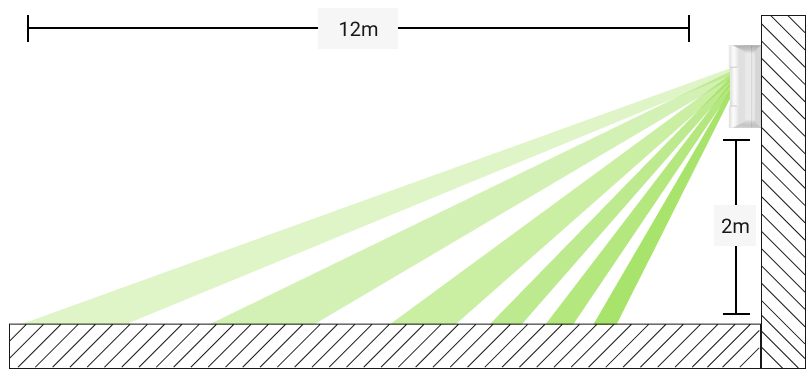
PIR sensors have low power consumption because they typically operate at low operating currents, typically in the uA range. Most of them require only simple power supply, which makes them versatile and suitable for a variety of scenarios.
The following shows some examples on what are PIR sensors used for.
- Security Systems: PIR sensors are extensively used in security alarm systems to detect human intrusions and trigger alarms or activate surveillance cameras.
- Lighting Control: To promote energy economy, PIR sensors are used in automatic lighting systems, such as those in parking lots, outdoor areas, and hallways, to detect human presence and regulate the lights accordingly.
- Home Automation: PIR sensors are essential to smart homes because they can detect human presence and use that information to trigger a variety of automated operations, such turning on lights, adjusting thermostats, or turning on appliances.
- Occupancy Sensing: To optimize energy usage, PIR sensors are used in building automation to monitor space occupancy and modify HVAC (heating, ventilation, and air conditioning) systems accordingly.
- Automatic Doors: PIR sensors are used in automatic door systems to detect approaching individuals and initiate the opening and closing mechanism.
What is A PIR Alarm System?
Since Roombanker is an expert in home automation and security alarm systems, here we will limit our introduction to PIR sensor in security alarm applications, especially in intrusion alarm.
A PIR alarm system incorporates PIR sensors as an essential component. PIR sensors detect infrared radiation emitted by the human body, and are particularly used for intrusion detection in home security alarm applications.
PIR sensors are usually installed in locations where there is a risk of unauthorized movement or entrance in PIR alarm systems. It is usually connected to a central home security hub and integrated with other security devices like cameras and alarm sirens.
When a PIR sensor detects changes in infrared radiation caused by the movement of a person, it triggers an alarm or activates other security measures, including sounding an alarm siren, sending notifications to homeowners or security personnel, or activating monitoring cameras to capture video evidence.
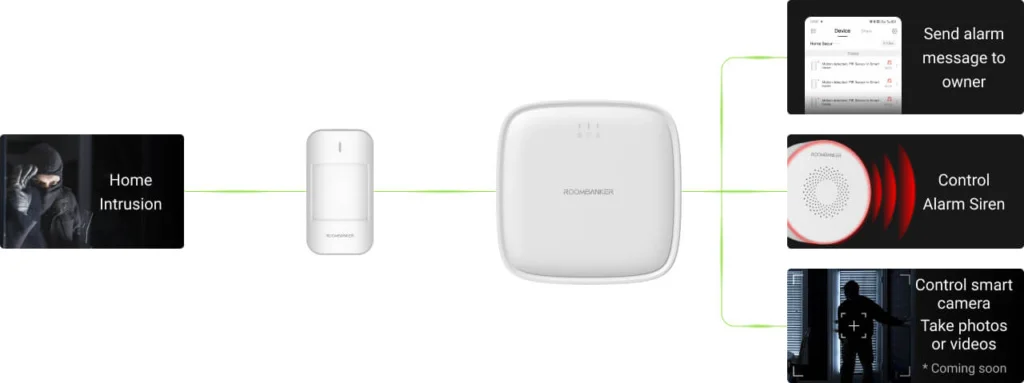
PIR alarm systems offer a dependable and effective way to identify intruders and improve the security of residences, commercial buildings, and other locations.
You may also want to know: What is Security Alarm System?
What is the Working Principle of PIR Sensor?
PIR sensors have a rather complex working principle because it uses the Pyroelectric Effect and a Fresnel len. But if you want to purchase high-quality PIR sensors, it’s important to know it. In this section, we’ll provide a thorough explanation of how these intricate components interact.
Pyroelectric Effect Used on PIR Sensors
As we mentioned before, PIR sensor has another name, which is pyroelectric infrared sensor. What is the pyroelectric effect? It describes a phenomena in which crystals undergo temperature fluctuations and produce charges at opposite ends. Simply put, the substances exhibit electrical polarization in response to thermal variations.
The pyroelectric effect plays a fundamental role in the operation of PIR sensors. It allows PIR sensors to detect infrared radiation emitted by people and and convert them into electrical signals.
Is it a little difficult to understand? In order to simplify the concept, it’s important to firstly realize that all objects in nature emit infrared radiation.
Objects with different temperatures emit infrared rays at different wavelengths, so infrared wavelengths are related to the temperature. The human body typically radiates infrared rays of approximately 10μm at a temperature of 37°C.
PIR sensors typically employ pyroelectric elements as their infrared sensing source. When a person enters the detection area of a PIR sensor, the temperature difference between the human body and the ambient environment causes the pyroelectric element to experience a change in infrared radiation temperature. This upsets the charge balance within the element, resulting in the release of charges. These charges are then detected and processed by the subsequent circuit, generating a signal output.
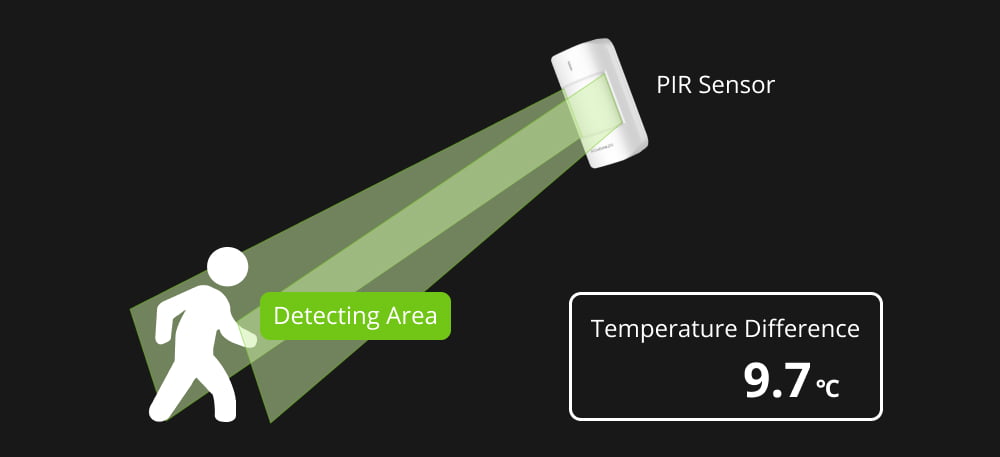
The detection wavelength range of PIR is generally in the range of 5-14um, that is, it can convert infrared signal changes of 5~12um wavelength into electrical signals.
It is important to note that PIR sensors detect changes in temperature, rather than fixed-wavelength infrared radiation. If an object with a fixed wavelength stays motionless within the detection range or moves too quickly, the PIR sensor can not detect it. Consequently, if a human body enters the detection area but remains stationary, without any temperature change, the sensor will not produce an output. Therefore, PIR sensors are specifically made to recognize variations in infrared radiation brought on by movement, which allows them to identify human or animal activity.
Fresnel Lens, How Does it Work within PIR Sensors
A Fresnel lens is a specialized type of lens that differs from traditional lenses in its design. It is composed of a series of concentric annular convex mirrors, with their centers all located at the same point. The radius of curvature of these mirrors gradually decreases, creating a lens-like structure.
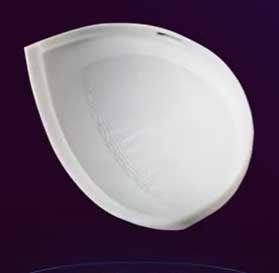
When it comes to PIR sensors, the infrared rays emitted by the human body are enhanced by the Fresnel lens and then concentrated on the pyroelectric element of the infrared sensing source.
Functions of Fresnel Lens on PIR Sensors
Focusing – Improve Efficiency
The Fresnel lens aids in focusing the infrared radiation emitted by the human body onto the pyroelectric element of the PIR sensor’s infrared sensing source. This improves the efficiency of the PIR sensor in detecting human presence.
Zone Division – Increase Sensitivity
The Fresnel lens can divide the detection area into multiple sections, creating alternating bright and dark zones. When a person moves across the lens’ field of view, the infrared radiation emitted by their body transitions from the dark region to the bright region, or vice versa, which results in variations in the PIR sensor’s signal, making the detection of movement possible and enhancing the detection sensitivity and accuracy of the PIR sensor.
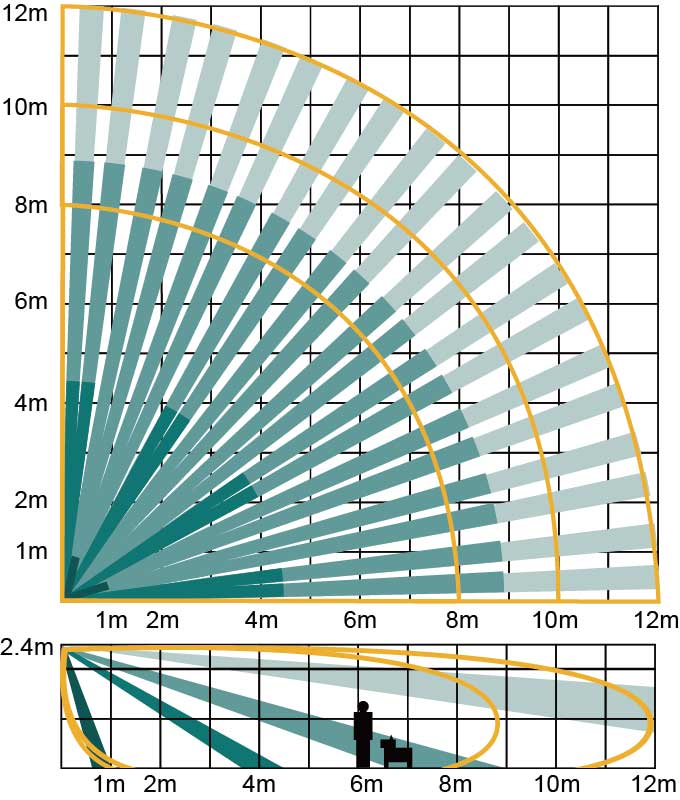
Working Principle of the PIR Sensor
A PIR sensor mainly consists of a Fresnel lens, two pyroelectric infrared elements, and a signal processor.
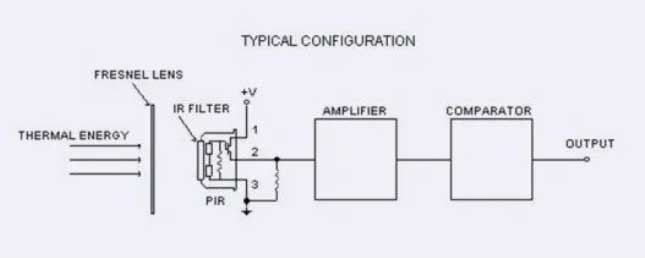
The core component of a PIR sensor is the pyroelectric element made of materials that exhibit the pyroelectric effect, which causes them to produce electric charges when exposed to temperature fluctuations. There are usually two pyroelectric elements connected in series or parallel within the sensor, and the directions of the heated electrode polarization of the two elements are exactly opposite. When combined with a Fresnel lens, the dual pyroelectric elements create two detection areas in the front.
The pyroelectric infrared elements continues to receive infrared radiation from the background space even in the absence of moving heat sources. However, in this case, no electrical signal output is produced because of the complimentary design of the two elements.
When a warm object moves within the detection area, the potential difference across the dual pyroelectric elements changes accordingly. When the warm object leaves the detection area, the potential difference is reversed. The dual pyroelectric elements lose their complementary balance and produce a signal output in response to this change.
The generated signal is then processed by a signal processor, which analyzes the signal for changes that exceed a predefined threshold. Should the detected alteration exceeds this threshold, the signal processor triggers an alarm or initiates other predetermined actions. This is the basic principle of how PIR sensors work.
Rapid Fire Q&A:Is the Sensitivity of PIR sensors is Directional?
In the given diagram, which of the two motion trajectories labeled as ① and ② is easier for a PIR (Passive Infrared) sensor to detect?
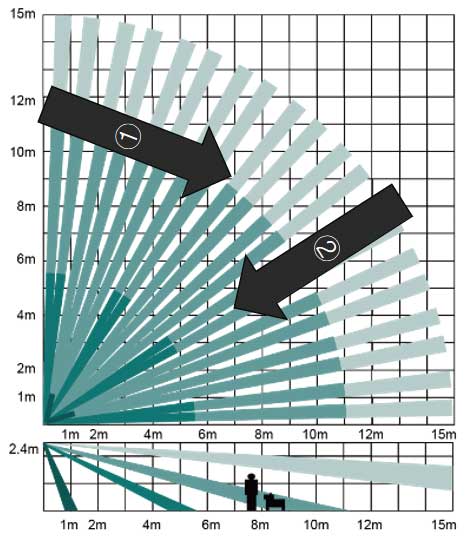
The answer is ①. The direction in which a person moves in relation to the sensor’s field of view affects the sensitivity of PIR sensors. They are usually more sensitive to movement in the transverse direction (perpendicular to the radius) than to movement in the radial direction because of their dual pyroelectric element construction. Therefore, rather than moving towards or away from the sensor, the PIR sensor’s capacity to detect human movement is most effective when the movement happens across its field of view. Why bring this up? Comprehending this idea will enable you to install your PIR sensors with improved precision.
The PIR sensor installation position must be carefully chosen in order to maximize detection sensitivity and reduce false alarms. The direction of anticipated human movement, the sensor’s coverage area and range, and any possible sources of interference or false triggers are all important factors to take into account. The sensor can be positioned to minimize false alarms from irrelevant movement or ambient influences and maximize sensitivity when capturing movement in the desired direction.
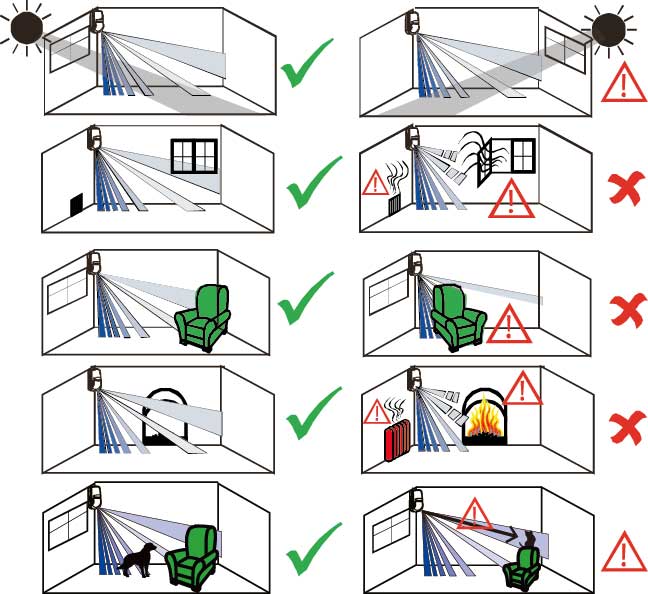
What is the Best PIR Sensor?
This article is not going to reveal which one is the best, as every one has their own preferences and costs. In keeping with an old Chinese proverb that reads, “Give a man a fish and you feed him for a day; teach a man to fish and you feed him for a lifetime”. I will inform you about the features to consider when buying PIR sensors to ensure that so you can determine which ones are the most useful.
Key Metrics for Assessing the Efficacy of PIR Motion Sensors
- Detection Range: The term “detection range” refers to the PIR sensor’s capacity to detect movement at various speeds as well as the detection distance and the horizontal and vertical coverage angles. It also involves considering whether the sensor supports lower window protection creep zone, which blocks detection in specific areas close to the ground.
- Detection Sensitivity: It is essential to assess whether the sensor’s detection sensitivity is constant across its coverage area. This involves checking for blind spots where the sensor may fail to detect movement. Additionally, the availability of manual or automatic sensitivity adjustment can be important for fine-tuning the sensor’s response.
- Detection Accuracy: Some applications require and benefit from high-precision detection. But this calls for a combination of sophisticated optical lens design and algorithm development to minimize false alarms and achieve accurate detection. On the other hand, features like anti-pet protection can be significant in preventing false triggers caused by the movement of small animals.
- Anti-Interference Ability: It’s critical that the sensor be able to filter out false alarms brought on by outside influences like heat waves or other types of interference. Effective algorithmic filtering, particularly in complex outdoor environments, helps ensure reliable detection.
- Environmental Adaptability: Take into account if the sensor’s sensitivity, detection algorithm, and other settings can be changed to accommodate shifting environmental factors, such as noise levels and temperature swings.
- Anti-Vandal Alarm: To guard against vandalism or efforts to impede the sensor’s field of view, some PIR sensors come equipped with functions like anti-tamper detection and anti-blocking detection.
- Signal Transmission Distance, Stability, and Power Consumption: For wireless PIR sensors, it is important to evaluate the signal transmission distance and stability. Furthermore, for battery-powered PIR sensors, power consumption regulation is essential for maximizing battery life.
These important indicators should be taken into account when assessing a PIR motion sensor’s performance since they can help determine the sensor’s suitability for a certain application and guarantee precise and dependable movement detection.
Final Word
In this article, we have explored the meaning of PIR sensors, what does a PIR sensor do, and the use of PIR sensors, especially in security alarm system and intrusion alarm scenarios. We have also delved into the working principle of PIR sensors, which involves the pyroelectric effect, Fresnel lens, and the detection principle of infrared radiation emitted by humans.
We’ve also covered the important aspects to take into account while selecting the best PIR sensor, such as its detection range, sensitivity, accuracy, resistance to interference, adaptability to different environments, and anti-vandal alarm functions. People can choose PIR sensors wisely for their particular requirements by being aware of these factors.
PIR sensors are an essential component of security alarm systems, automated lighting controls, and other applications that improve convenience and safety. For those seeking reliable and convenient PIR sensor solutions, Roombanker offers pet-friendly, battery-powered PIR sensors with with flexibility in installation and no need for complex wiring.
If you are looking to enhance your security system or automate your smart homes, Roombanker is your trusted partner in integrated home automation and security alarm systems. We welcome you to explore the exceptional performance and reliability of our sensors, ensuring enhanced security and peace of mind in your home or business.
